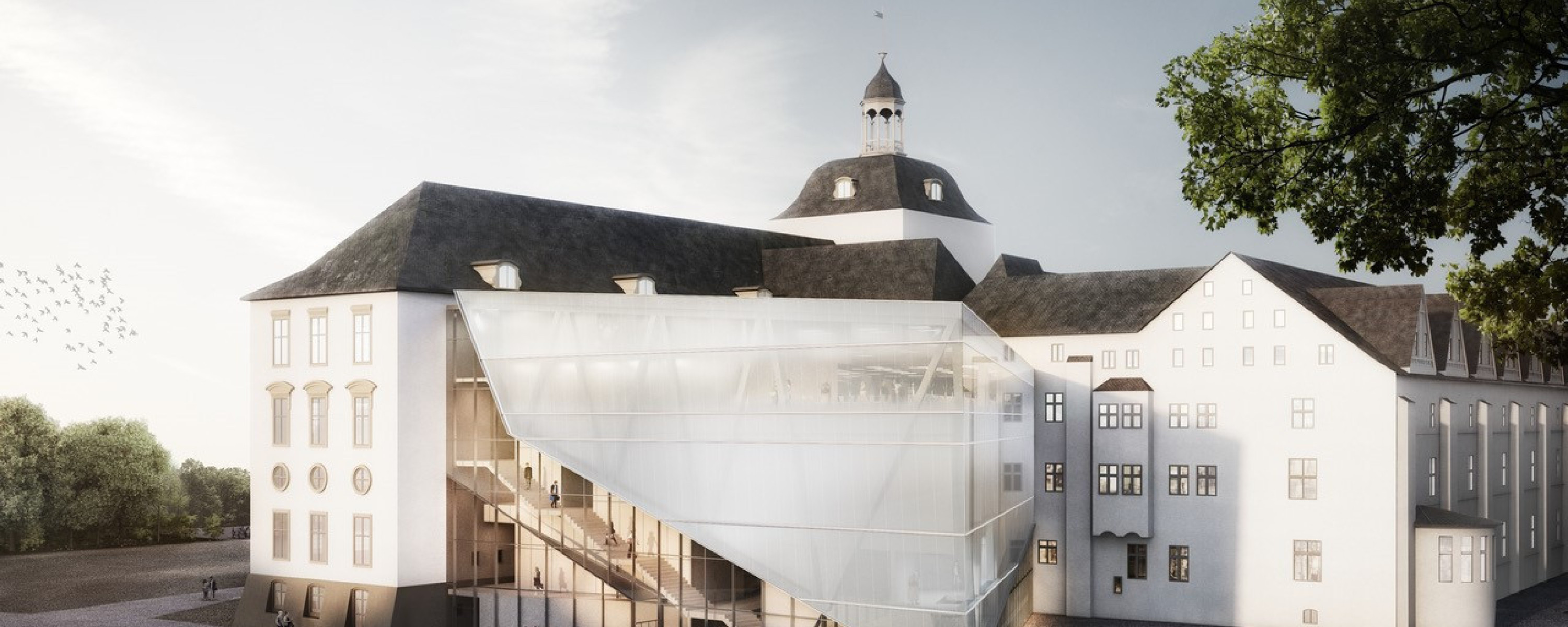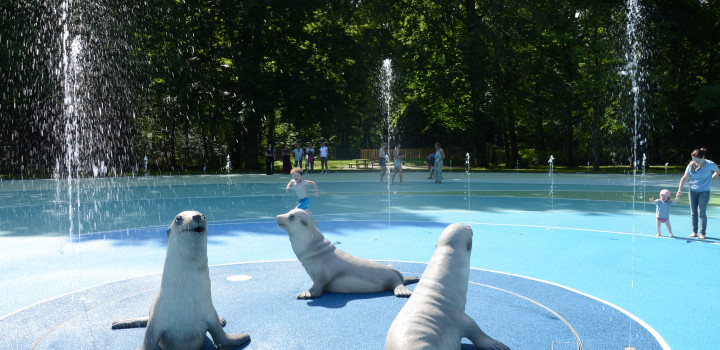On the basis of the master plan drawn up by Holzer Kobler Architekturen, the open spaces of the castle island are being redesigned with modified pathways, recreational areas and additional structural access. The new centre, which is characterised by a contemporary extension of the palace complex that was last decisively shaped in the Baroque period, has a signal effect. The elegant extension completes the second courtyard complex, which was already conceived in the Baroque period, and its form and filigree, partly reflective materiality bring the historical monument into the present day. With its cosmopolitanism and the dissolution between inside and outside, it creates new functional contexts and new narratives of contemporary museum presentation for Gottorf Palace.
The primary goal of the reorganisation and redesign of Gottorf Palace is to create a striking arrangement of all areas of use. Starting with the new structure, which functions as an entrance, central distributor and event area and also houses the catering facilities, new circuits are created through the exhibitions in the palace building. The reorganisation of the vertical access and partial additional ramps designed with the extension also offer the possibility of barrier-free access to all exhibition areas for the first time.
In the future, the collections of archaeology and art and cultural history will be presented on two main floors and in parts of the basement with a total exhibition area of approx. 8,600 square metres. It is planned that these will be supplemented by historical "period rooms" and a decentralised mediation offer. While maintaining the independent presentation of the collection and appreciating the different museum narratives, the future conception will strive for a strong link between the two collections and their contemporary reference. The cabinet structure of the stately palace rooms will serve to facilitate the free exploration of the collections. A clear guidance system will facilitate orientation, especially at the vertical junctions within the museums. In addition, differentiated presentation formats will make it possible to find one's way within the complex exhibition units in terms of content and space.
An idealised, rhythmically organised tour should lead through the exhibition areas as well as the service areas and rest zones located along the way. In the overall conception of the presentations, the experience of the palace building and its surroundings as an authentic place is to be given high priority. Thus, some special rooms on the ground floor and the first floor feature the historical room setting and offer insights into the internal organisation and uses of the historical building as punctuations in the actual museum tour. On the ground floor, the education and outreach department will have its own sequence of rooms with additional satellites on the 1st and 2nd floors. In this way, independent, undisturbed activities are possible on the one hand, and on the other hand, the opportunity is offered to closely link education and museum pedagogy with the exhibitions.
In the course of the reorganisation, it is planned to concentrate the areas of administration, offices and workshops on the upper floors, thus creating functional and spacious working environments in a historical setting.
Museum Island Gottorf Castle
As the headquarters of the Schleswig-Holstein State Museums Foundation, Gottorf Castle houses the State Museum of Art and Cultural History and the State Archaeological Museum. Together with the surrounding castle island and the nearby baroque garden, it forms a scenic cultural centre with supraregional appeal in Schleswig on the Schlei.
Project Team
- Holzer Kobler Architekten
Location
Schleswig








